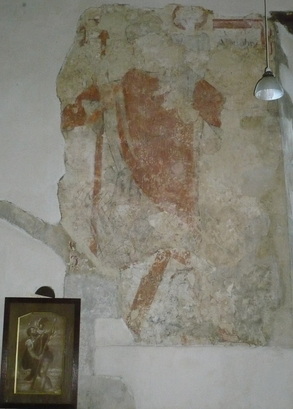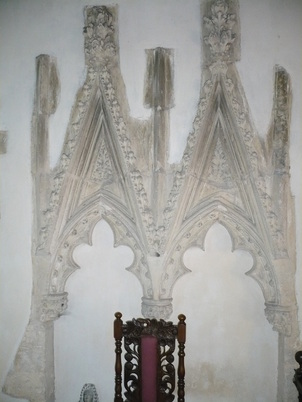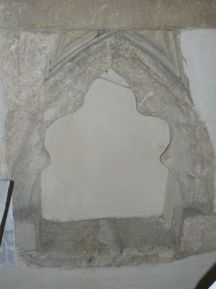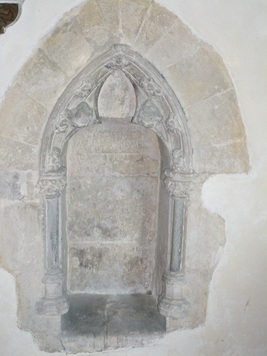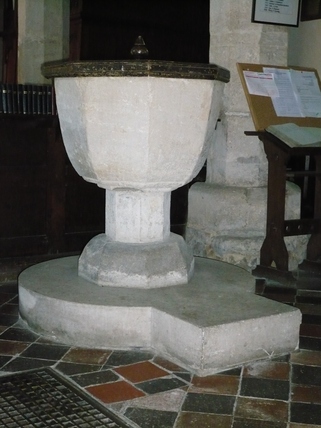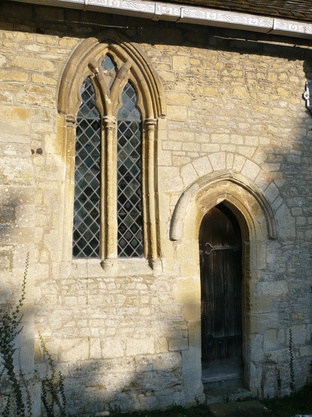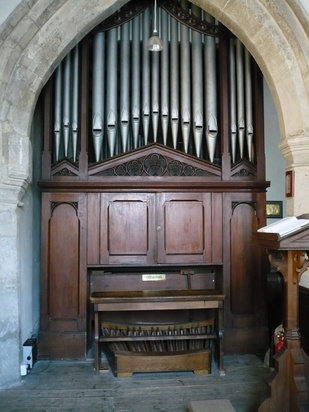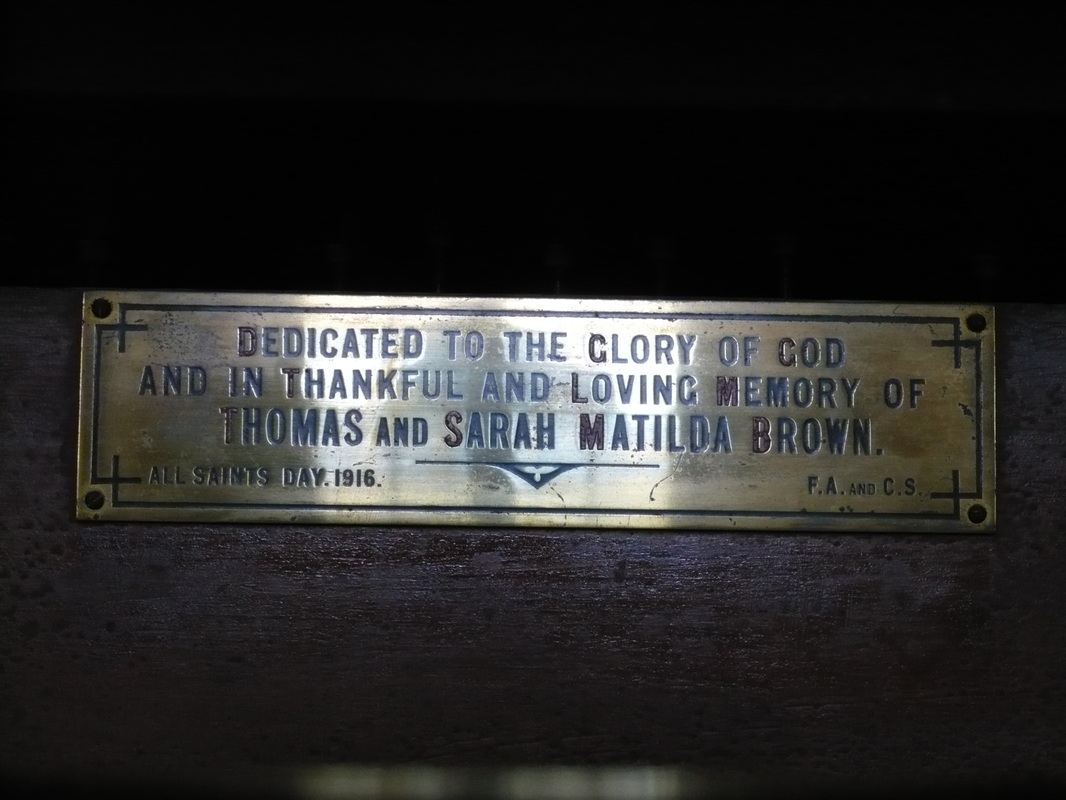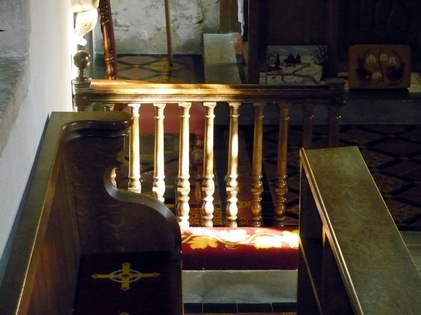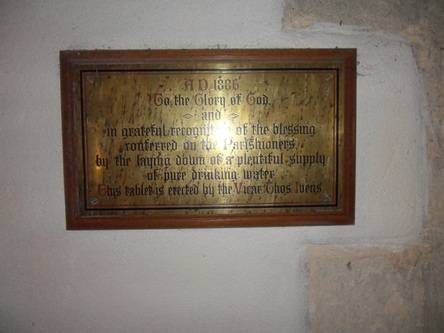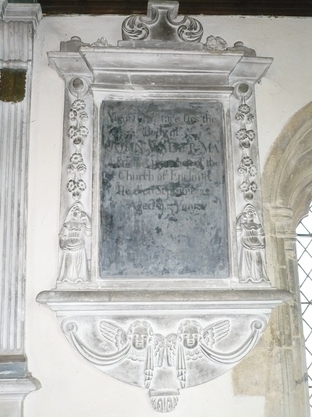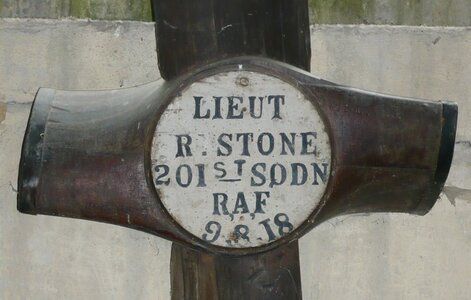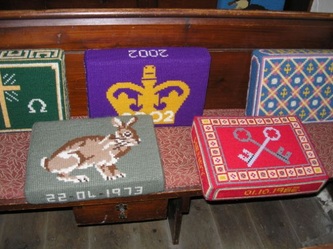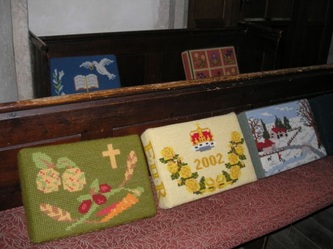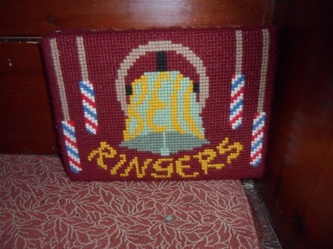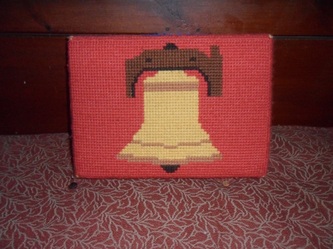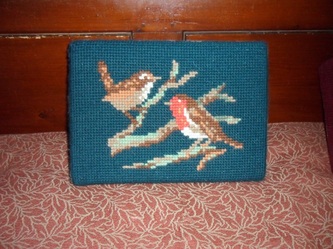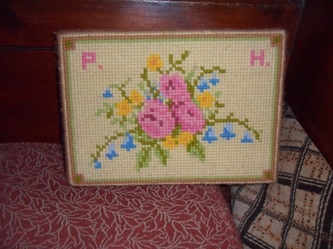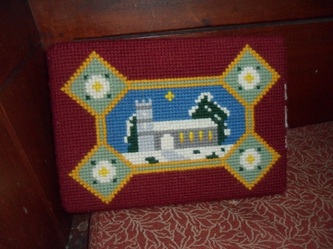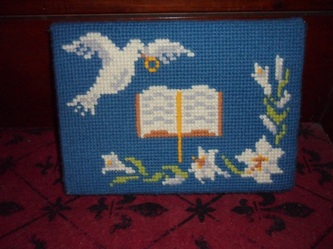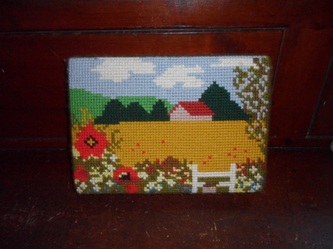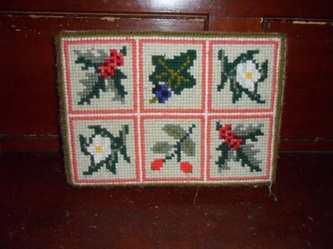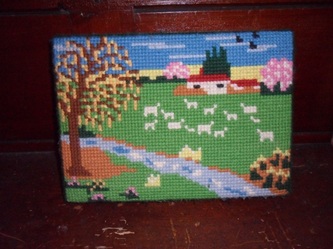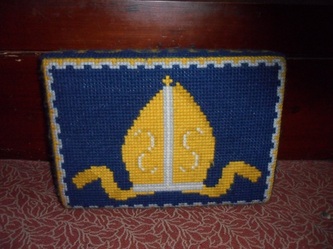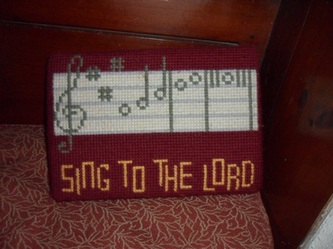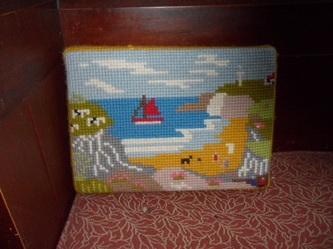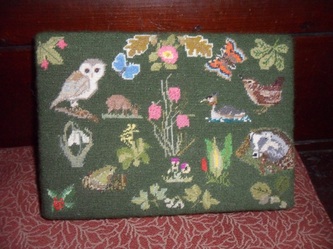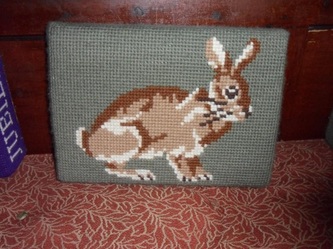St Nicholas' Church, Piddington
Features of interest
Panoramic view of St Nicholas' Church, Piddington. Courtesy of Nikhilesh Haval © Nikhilesh Haval 2013
Medieval wall painting of St Christopher
The north wall of the nave contains traces of a door that has been blocked in and covered with a 14th century wall painting of St Christopher. The image is very faint but it is possible to make out the saint, holding his staff, and a small chapel (possibly that of Ralph the hermit at Muswell) in the background.
The painting was discovered in 1896 and completely uncovered and restored in 1935 by E.T. Long of Oxford. It had been covered sometime in the 17th century with a thin layer of plaster on which was written the Creed within a scroll border. When the painting was restored in 1935, a small portion of the overpainted border was left at the top right.
It is presumed that the painting had been plastered over during the Civil War, 1642–45, to prevent damage by Parliamentarian troops who were besieging Boarstall Tower.
It is presumed that the painting had been plastered over during the Civil War, 1642–45, to prevent damage by Parliamentarian troops who were besieging Boarstall Tower.
Double sedilia
In the south wall of the chancel is a 14th-century double sedilia of a most beautiful and elaborate design. (‘Sedilia’ is the architectural term for a group of stone seats, usually three, that are set into the south wall of a chancel for the use of the clergy.)
Sumptuously carved with foliage and ballflower ornament, cinquefoiled arches, tall canopies and pinnacles, and fine crockets and finials, the sedilia is of a later date than the rest of the chancel, and is thought to have been removed from Missenden Abbey at the time of the Dissolution of the Monasteries and inserted into this older wall.
There is a third finial built into the wall over the priest’s door, which seems to show that the sedilia was originally threefold, and was reduced to double form to suit this small chancel.
Sumptuously carved with foliage and ballflower ornament, cinquefoiled arches, tall canopies and pinnacles, and fine crockets and finials, the sedilia is of a later date than the rest of the chancel, and is thought to have been removed from Missenden Abbey at the time of the Dissolution of the Monasteries and inserted into this older wall.
There is a third finial built into the wall over the priest’s door, which seems to show that the sedilia was originally threefold, and was reduced to double form to suit this small chancel.
Piscina
The piscina next to the double sedilia is also canopied.
Easter sepulchre
Opposite the sedilia, on the north wall, is a lovely little Easter sepulchre. It has Purbeck marble pillars and an arch ornamented with winged cherubs.
Like the sedilia and piscina opposite, the design and workmanship contrasts with the simplicity of the chancel itself.
Like the sedilia and piscina opposite, the design and workmanship contrasts with the simplicity of the chancel itself.
Font
The octagonal chalice-shaped font is medieval.
Priest's door
In the south wall of the chancel is a 14th century priest's door. The finial over the door may be from a third seat of the sedilia that is set into the chancel wall. This sedilia is thought to have been from Missenden Abbey.
Organ
‘Built in 1916 by Grey & Davison. Re-used material. Most of pipework is mid-late 19th cent, and the Bourdon chest is dated 1892.’ Repairs were carried out in c.1970 (by David Herring), c.1975 (by John Betts) and 1993 (by B. Carlick) (information taken from National Pipe Organ Register).
Altar rails
The turned communion rails are 18th century.
Drinking water
A brass plate on the west wall of the nave thanking God for 'a plentiful supply of pure drinking water' is a reminder that prior to 1886 the drinking water was obtained primarily from the brook that runs through the village. The text reads: 'To the Glory of God, and in grateful recognition of the blessing conferred on the Parishioners, by the laying down of a plentiful supply of pure drinking water, This tablet is erected by the Vicar Thos. Ivens.'
Monuments
‘The monuments inside the church include a black marble tablet in the north wall of the chancel to Elizabeth (d. 1709), wife of John Walker; a tablet to John Walker (d. 1722), “a pious son of the Church of England”; a monument to John Walker (d. 1731) and his relations; a brass (1613) to Catherine Hussey. In the churchyard, which was newly railed in in 1843, is the grave of John Drinkwater, the poet (d. 1937)’ (Lobel, 1957).
First World War aeroplane propeller
The ‘cross-like’ memorial in the belfry is actually a cut-down First World War aeroplane propeller, dedicated to the memory of Lieutenant Richard Stone (known as Stoney to his friends). Lieutenant Stone was killed in action in France on 9th August 1918. He was 19 years old. Read more about Lieutenant Richard Stone here.
Scratch dial
On the outside of the church at the eastern end of the south wall is a scratch or mass dial, distinguishable by a hole in the wall where a dowel pin protruded. On careful observation a scratch mark can be seen on the wall, the significance being that when the shadow of the dowel pin covered the scratch mark it was time for the service to start.
For more information on scratch dials please see Peter T.J. Rumley's article 'Medieval Mass Dials Decoded', which was originally published in the 2013 edition of Historic Churches magazine.
Kneelers
There are some beautiful handmade kneelers in the church, a selection of which appear below. If you have a favourite kneeler that is not included here, please let me know and, if possible, let me have a photograph of it. And if you'd like to have the name of the person who made a particular kneeler added to the caption, again let me know.
